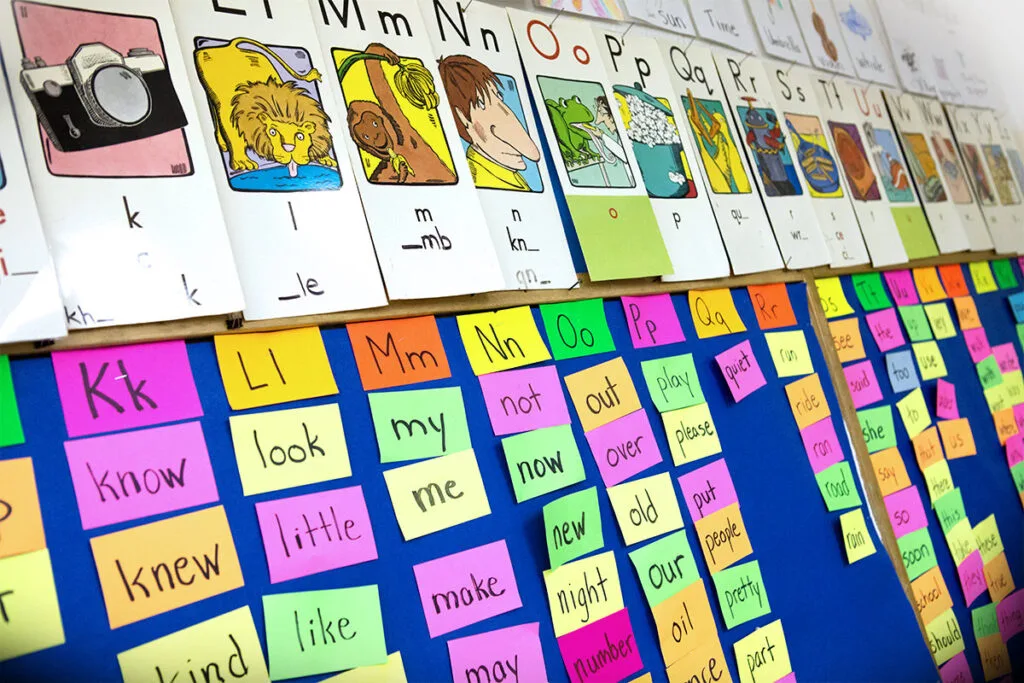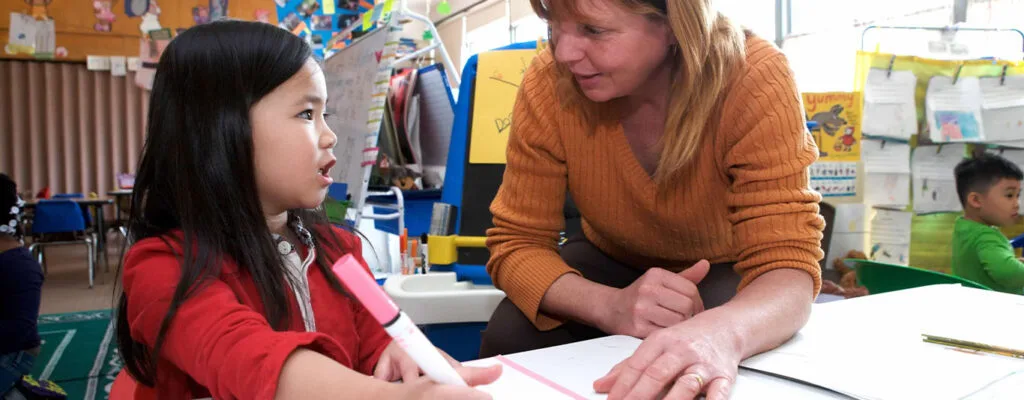


The Word Wall is the place in your classroom where high-frequency words are housed after you have taught them (other important words such as vocabulary or theme words should be posted elsewhere). The Word Wall serves as a visual reminder and reference tool for your students that they can use whenever they read or write. A Word Wall makes it possible for children to write conventionally without asking for help, allowing them to be more independent and less dependent on you.
When children can spell these high-frequency words correctly and with automaticity, it frees them to concentrate on applying themselves to the content of their pieces or on spelling more challenging words. Incidentally, as children peruse the Word Wall in search of the word they are looking for, they end up reading and reviewing several other important words as well. The Word Wall also give children practice with visual discrimination, an important building block for reading. For example, the words the, their, these, and there all look similar; however, when they are posted near one another, children can see how each letter’s spot creates a very different word.
Place the Word Wall where children can easily see the words and reach them. Children need to be able to touch the word they reference, at least with a pointer if not with their hand, because that way someone can give them feedback that they have indeed found the correct word! This makes the learning concrete, something our young and struggling readers need.
Also, you will be less likely to add words to the Word Wall on a regular basis if you have to climb on furniture to access it.
Since small words are generally easy to sound out and spell in Spanish, it can be argued that an A-Z Word Wall is not necessary for a Spanish language classroom. Rather, words could be grouped by their spelling, such as words spelled with c/s/z; words with silent h; and, words spelled with ll or y, etc.
Still, if you are seeing frequent misspellings of common words, a bank of words organized alphabetically can be key to supporting and keeping your children accountable for reading and spelling these words.


Strengthen teacher-child relationships, foster early literacy, and create engaging learning environments with research-backed strategies. 📌 Watch, learn, and apply today.

CLI partners with Florida early education programs to strengthen teaching, empower leaders, and boost child literacy through coaching and professional development.